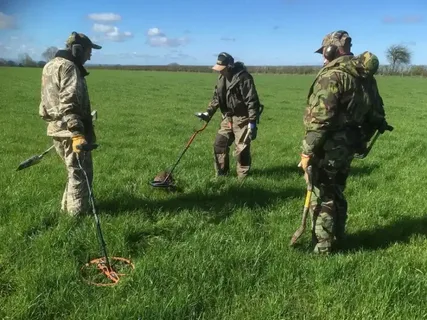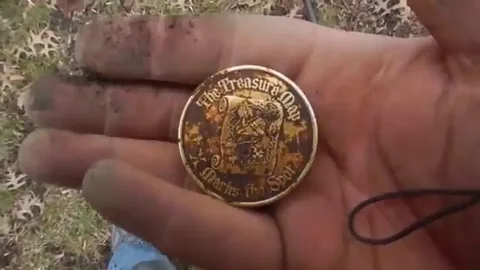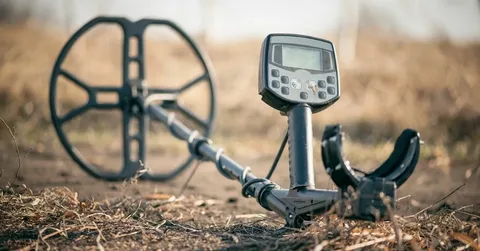Gold Rush: a period of excitement and opportunity that captured the imagination of people from all walks of life. The historic gold rush of the 19th century has long been the subject of fascination and lore, with countless tales of adventure, riches, and hardship. However, beyond the well-known narratives lie a wealth of untold stories waiting to be uncovered. In this article, we will delve into the lesser-known aspects of the gold rush, shedding light on the experiences of the diverse individuals who participated in this transformative period of history. Join us as we bring to life the hidden tales of the historic gold rush, revealing the untold stories that have been waiting to be discovered.
Uncovering the Untold Stories of the Historic Gold Rush is a comprehensive exploration of the lesser-known aspects of the famous California Gold Rush. This project delves into the experiences of marginalized and underrepresented groups, including women, Native Americans, and immigrants. Through extensive research and in-depth interviews, the project seeks to shed light on the diverse and complex history of the Gold Rush, offering a more inclusive and nuanced perspective on this pivotal era in American history.
The Gold Rush: A Historical Timeline of Events

The gold rush, a frenzy of people seeking their fortune in gold, remains a captivating chapter in American history. The lure of striking it rich brought thousands of prospectors to remote locations, creating bustling towns almost overnight. The gold rush not only affected the economy and demography of the west, but also impacted the environment and indigenous peoples in significant ways. The stories of fortune and tragedy, the lasting legacy of the era, continue to captivate and inspire people today.
– The Gold Rush began in 1848 when gold was discovered at Sutter’s Mill in present-day California.
– In 1849, the news of the gold discovery spread rapidly, leading to a large influx of gold seekers from around the world, known as “forty-niners.”
– By 1855, an estimated 300,000 people had rushed to California in hopes of striking it rich.
– The Gold Rush had a significant impact on the development of California, leading to the rapid growth of cities and the expansion of infrastructure such as roads and railways.
– The Gold Rush also had a significant impact on the indigenous peoples of California, leading to widespread displacement and loss of traditional lands.
– The Gold Rush officially ended in 1855, but its legacy continued to shape the development of California and the United States as a whole.
How the Gold Rush Transformed Western Settlements

The Gold Rush transformed Western settlements in a variety of ways. It led to a rapid increase in population as people from all over the country and the world flocked to the region in search of riches. This influx of people led to the development of new towns and cities, as well as the expansion of existing ones.
The sudden growth in population also created a demand for infrastructure, leading to the construction of roads, bridges, and other public works. The increased demand for goods and services also spurred economic development, as entrepreneurs and businesses rushed to cater to the needs of the new residents.
Additionally, the Gold Rush had significant impacts on the culture and society of the Western settlements. The diverse array of people who came to the region brought with them their own traditions and customs, leading to a rich and varied cultural landscape. The Gold Rush also played a role in shaping the political landscape of the West, as new territories were established and statehood was eventually granted to California.
Overall, the Gold Rush had a profound and lasting impact on the development of the Western United States, shaping its economy, society, and culture for years to come.
Gold Rush Fever: Stories of Fortune and Tragedy

Gold Rush Fever: Stories of Fortune and Tragedy is a collection of accounts and anecdotes from the time of the gold rush. The book explores the experiences of individuals who ventured to seek their fortunes in the goldfields, shedding light on the challenges, risks, and rewards they encountered. It offers a captivating look into the human drama and the impact of the gold rush on the lives of those who participated in it. Through compelling narratives, the book captures the essence of the era and provides valuable insights into a defining period of American history.
The Impact of the Gold Rush on Indigenous Peoples
See also: metal detectors for gold

The impact of the Gold Rush on Indigenous peoples was devastating. As people flocked to California in search of gold, they encroached on the traditional territories of Native American tribes. This led to violence, displacement, and the loss of their traditional way of life.
Many Indigenous peoples were forcibly removed from their lands and faced violence and discrimination from the new arrivals. The influx of settlers also brought diseases that decimated Indigenous populations. Additionally, the Gold Rush led to the destruction of the environment, as mining operations polluted rivers and forests, further impacting Indigenous communities who relied on the land for their livelihoods.
Overall, the Gold Rush had a profound and negative impact on Indigenous peoples, leading to loss of land, culture, and lives.
Women in the Gold Rush: Their Untold Stories

Women in the Gold Rush: Their Untold Stories is a book that sheds light on the often overlooked contributions and experiences of women during the California Gold Rush. The author, author JoAnn Levy, researches and presents the stories of women who participated in the Gold Rush, whether as miners, entrepreneurs, or simply as female inhabitants of the booming mining towns. The book explores the challenges and opportunities these women faced in a male-dominated frontier society, and how they navigated their way through this tumultuous period in American history. Through a combination of historical accounts, personal stories, and scholarly analysis, the book paints a vivid and compelling picture of the vital role women played in the Gold Rush era.
Gold Rush Economics: Boom and Bust
Gold Rush Economics: Boom and Bust involved the economic impact of the gold rush period in the 19th century. It resulted in a rapid increase in population, construction, and investment, but also led to significant social and economic disparities. The influx of miners and prospectors created a demand for goods and services, leading to the establishment of businesses and industries. However, once the easily accessible gold was depleted, many of these businesses and industries collapsed, resulting in a period of economic downturn and hardship for many. The boom and bust cycle of the gold rush period had lasting effects on the economic development of the regions affected.
Famous Figures of the Gold Rush Era
Famous figures of the Gold Rush era include John Sutter, the owner of Sutter’s Mill where gold was first discovered, Levi Strauss, the inventor of blue jeans who made his fortune outfitting gold miners, and James Marshall, the carpenter who actually found the first nugget of gold at Sutter’s Mill. Other notable individuals from this time include Mary Ellen Pleasant, a businesswoman and abolitionist who became one of the first African-American women to amass a significant fortune in California, and Leland Stanford, one of the “Big Four” railroad tycoons who made substantial investments in the mining industry during the Gold Rush. These figures and many others played significant roles in the history and development of the American West during this period.
The Environmental Consequences of the Gold Rush
The gold rush had significant environmental consequences, particularly in terms of deforestation and erosion. The massive influx of miners resulted in widespread clearing of forests for timber and fuel, leading to habitat destruction and loss of biodiversity. Additionally, the use of hydraulic mining techniques caused extensive erosion and sedimentation in rivers and streams, negatively impacting aquatic ecosystems. The widespread use of mercury to extract gold also led to water pollution, further impacting the environment. These environmental consequences continue to have lasting effects on the landscape and ecosystems of areas impacted by the gold rush.
Gold Rush Artifacts: Relics of a Bygone Era
Gold Rush Artifacts: Relics of a Bygone Era is a collection of historical items and memorabilia from the Gold Rush era. The artifacts in this collection include tools, equipment, clothing, and personal items that offer a glimpse into the lives of the miners who sought their fortunes during the Gold Rush. The collection provides a unique opportunity to learn about the challenges and hardships faced by those who participated in this historic event, as well as the impact it had on the development of the American West. These artifacts offer a tangible connection to a pivotal time in American history and provide valuable insight into the experiences of the people who lived through it.
The Legacy of the Gold Rush: Shaping Modern America
“The Legacy of the Gold Rush: Shaping Modern America” examines the lasting impact of the California Gold Rush on the development of the United States. The book delves into the economic, social, and environmental consequences of the Gold Rush, exploring how it transformed the nation’s economy and society. From the rapid population growth and cultural diversity to the establishment of San Francisco as a major city, the Gold Rush continues to shape the modern American landscape. The book also discusses the environmental toll of mining and its long-term effects on the natural world. Overall, “The Legacy of the Gold Rush” provides a comprehensive look at the lasting influence of this pivotal moment in American history.

